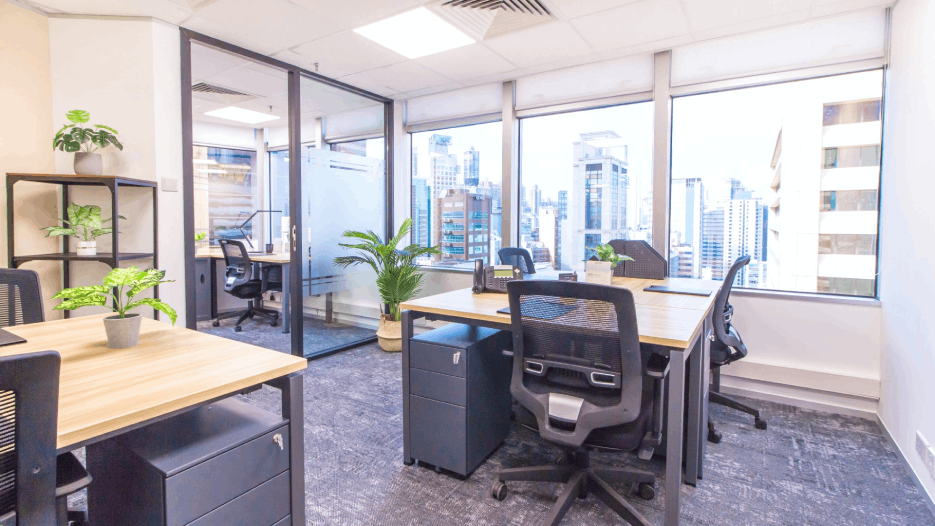How to Create an Agile Working Environment in Your Workplace?

A flexible workforce needs a workspace that responds to their working style – this is why agile workplace designs are finding popularity among modern, growing businesses.
Agile workplaces gives employees an environment that matches their work goals as well as the company’s business model. The workspace tends to focus on versatility and comfort, which promotes in greater productivity for its workforce.
If you are thinking of transforming your workplace into a modern agile work environment, here are some points to consider.
What is Agile Working?
Agile working is a technique of accomplishing tasks with optimal flexibility and minimal constraints. In a layman's language, agile working is all about finding ways to enhance productivity and improve motivation while prioritising the mental and physical wellbeing of the employees to create a more efficient, cost effective and productive workforce.
What is an Agile Workspace?
An agile workspace is a space designed to achieve maximum flexibility for employees. The workplace makes it possible for employees to work when, where, and how they choose and offer them all the necessary tools and technology they require.
An agile workplace is about have a space that creates a great working experience for employees that results in good productivity and performance.
What are the Benefits of the Agile Work Model?
Both employers and workers have a lot to gain from today’s agile workplaces. Here are some benefits of an agile working environment:
• Individual freedom and flexibility for employees – employees can choose where and the kind of workstation that suits their preferences.
• Promotes freer collaboration and communication – this level of openness creates stable grounds for a more cross-departmentally operational culture, which enhances innovation, greater employee wellbeing, and optimal productivity.
• Agile work promotes an organisational culture that results in high levels of satisfaction in worker experience – this implies longer-term retention, reduced training expenses, revenue loss, quality loss, recruiting costs, administrative costs, and other company costs.
• Workers feel valued, trusted, and empowered to exploit their full potential – employees are left alone with all the freedom to manage all their daily activities by themselves. This gives them a sense of entitlement to the company they are working for.
• Employers with agile work environments may find it easier to recruit top talent.
• In most cases, agile workspaces occupy less floor space compared to more conventional layouts. This implies saving on leasing costs, facilities maintenance, cleaning costs, and utility costs.
Agile Working and Flexible Working: What is the Difference?
Most people confuse agile and flexible working, but there is a fine line distinguishing them. This fine line comes from their unique objectives. For instance, while the objective of flexible working is geared towards achieving employee convenience and special requirements, the objective of agile working is to evolve processes and ways of work through providing the right technology and tools and diversity in office design.
To get a better picture, let’s define flexible working. Flexible working is a contractual/circumstantial model that is meant to meet employee unique demands by circumventing the limitations of the conventional 9-5 working model.
Flexible working comes down to agreements between the employer and an employee on aspects such as hours and location of work (i.e. working remotely).
To wrap up these differences, while the two work models are closely linked, flexible working is more about particular worker needs and less about approaches of work and performance modernization, while the agile way of working is like a tool deployed by an employer to achieve the company's objectives.
Read More
- From 'The Great Resignation' to unretirement: How to capture the mature workforce by offering agile working?
- Developing Multiple Careers: How Flexible Workspaces Help in This Rising Work Trend
Who Benefits Most From an Agile Work Environment?
An agile workplace can be implemented in all types of organisations of all sizes and across various industries. However, the approach to attaining agility may differ and requires further customisation that caters to its specific needs based on industry and the challenges its operative environment presents.
How to Create an Office Environment that Supports an Agile Way of Working?
For an agile work model to work, furniture, office design, and technology should be coordinated to provide adequate resources to facilitate a flexible environment, which encourages creativity, motivation, and optimal productivity.
As a flexible workspace provider, Compass Offices has helped hundreds of businesses adopt agile working with ease. How do we achieve that? Here is how.
Going Open is Crucial
Agile workplaces would be hard to implement if you don't bring into the equation an environment to promote much-needed flexibility. Transforming the space into an open-plan office is a great way to open up the space and do away with the stumbling blocks that are characteristics of conventionally structured workspaces.
Cater for a Wide Range of Workspaces
‘Agile working’ is such a trendy word within the industry but if you don’t offer the necessary facilities and resources, that word could just remain a novelty concept. One of the challenging parts of making this a reality is meeting requirements for a wide range of workspaces, from private and social settings to collaborative.
The focus should be on areas that are instrumental in efficiency and agility. For instance, at Compass Offices, we provide flexible office spaces that are intrinsically agile – we have private offices, hybrid workspaces, tech-ready offices for new tech innovators, third spaces (business lounges and café areas to foster community spirit), meeting rooms for formal discussions/get-togethers, and fully customisable space for businesses with specific needs.
Make Tech More Flexible
Unlike in the past when data connectivity and powering up were moored to the desk, now tech is quite flexible thanks to flexible project management platforms, and power-integrated furniture. We are living in a very fast-paced world and therefore you should make sure your technology matches this agility.
Install Ergonomic and Modular Furniture
When redesigning your office space for an agile working environment you need to choose the right furniture, i.e, modular furniture that can be moved around the space depending on the task requirements. Compass Offices comes business-ready and fully furnished and our offices are designed to provide optimum space.
Tools and Technologies for Agile Workspaces
There are a variety of tools in alignment to the sentiment of an agile workspace. Compass Offices’ flexible workspace, in particular, its plug and play hot desk solution provides access to a desk at a convenient location in the Central business district across APAC. Typically, the U-desk solution offers the necessities of a modern office at a fraction of the cost of actual office rentals. The U desk service is ideal for business travelers, entrepreneurs or self-starters looking to work conveniently in a secure and professional environment. Other means that serve to create agility in the workplace include the implementation of prevalent video conferencing tools such as Zoom and Cisco Webex, which are essentially tools that support seamless virtual meetings as well as the facilitation of connection among remote and on-site employees. Finally, project management tools and software such as Trello, Asana, or Jira can be integrated to further help teams organise work-related agendas, tasks, track progress, and adapt to new and changing project requirements.
Ready to transform your office into an agile workspace?
Compass Offices is experienced in designing an agile working environment for both small and large companies, from a flexible office space to a customised workspace, and Enterprise Solutions for businesses with individualistic requirements. Agility, scalability, and diversity of location are gaining importance for today’s clients. As business leaders focus on future proofing their operations to better address any impending and unforeseen challenges. Compass Offices continues to help them optimise their real estate commitment in alignment with their business and operational needs. A new agile, purpose-driven office can bring many benefits to both the employer and employee and ensure that real estate can keep up with the changing needs of businesses. Start your journey with us today! Get in touch now.





